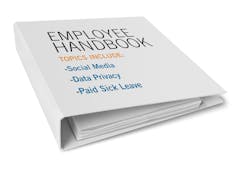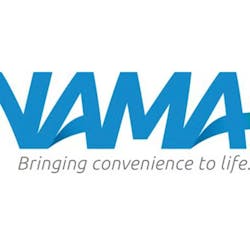Across different industries and businesses, employees can come to expect one similar thing: the employee handbook. It’s something that rarely crosses a vending operator’s mind, yet can have a huge effect on employees. Around 92 percent of companies have employee handbooks according to a recent survey conducted by XpertHR, an online service to help human resource professionals comply with federal, state and municipal law.
The U.S. Small Business Administration reports that a well-written handbook describes expectations for employees and conveys what employees can expect from the company. Typical employee handbook topics include Non-Disclosure Agreements (NDAs) and conflict of interest statements, anti-discrimination policies, compensation, work schedules, standards of conduct, general employment information, safety and security, computers and technology, employee benefits and leave policies, to name the most common. But XpertHR reports that there are a few new emerging issues that are becoming more commonly addressed in employee handbooks, and it’s important for operators to take note.
Paid sick leave is the top emerging trend that is appearing on employee handbooks. In fact, 79.4 percent of survey respondents address the new legal trend of paid sick leave in their handbooks. Data privacy comes in second with 67.2 percent of companies having a policy on data privacy. Social media is the third most popular emerging trend with 64.2 percent of companies addressing social media policies in their employee handbooks.
Relating to your business
Do you give new hires an employee handbook their first day working for you? Do you let your current employees know when you update the employee handbook? See how you measure up to the XpertHR statistics.
Updating your employee handbook
A majority, 78 percent of companies reported updating their handbook within the last two years and 64 percent will update their handbook in the next 12 months. A small 2.8 percent did not know when their handbook was last updated.
Preparing your employee handbook
More than half of companies, 58.5 percent, report their employee handbooks are prepared in-house by HR with review by a lawyer. The vast majority, 83.4 percent report that HR is solely responsible for updating the handbook.
Offering your employee handbook
While the majority of businesses use one employee handbook company-wide, nearly 20 percent offer different versions of handbooks depending on the employee group or department. For example: seasonal employees vs. permanent employees, corporate vs. locations by state, hourly vs. salary, union vs. non-union, field workers vs. office workers, staff vs. faculty vs. administration, exempt vs. non-exempt, and manager vs. employee.
The majority of companies, 64.5 percent, also distribute their employee handbooks via print, with the intranet as a close second at 55.3 percent and email at 28.2 percent. More than 90 percent of companies require written acknowledgement of the receipt of a handbook.
The employee handbook lets employees know what is expected of them and protects you from workman’s compensation issues and wrongful termination lawsuits. Make sure you consider this important aspect of managing a business.





